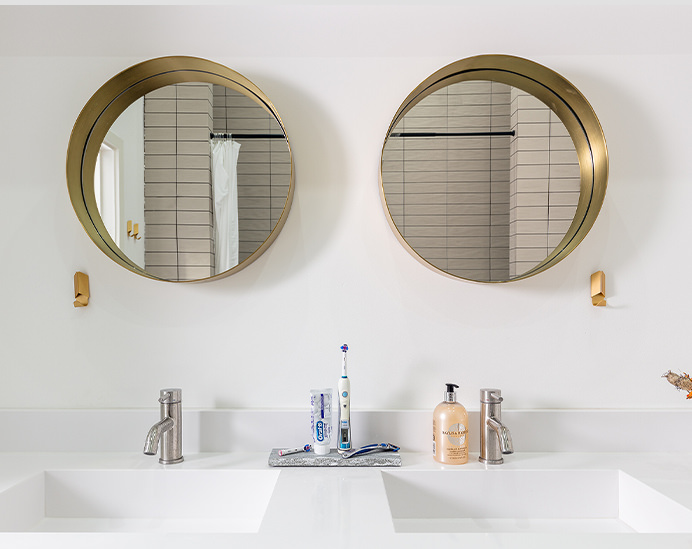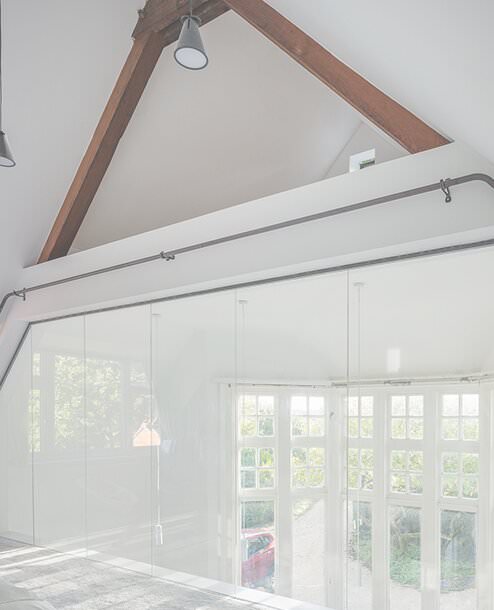Beginner’s Guide to Use Class Orders in England
January 6, 2023
If you’ve had any experience changing the use of a building or piece of land, then Use Classes Orders will definitely be something you’ve heard of.
Wrapping your head around the concept can be difficult at first thanks to the needlessly complicated way the government chooses to explain it.
So, to save you a headache, we lay out what exactly it all means.
But first, let’s clear up exactly what these terms mean.
What Are Use Classes?
Use Classes are the ‘labels’ that determine what a residential or commercial property or plot of land will be used for by its lawful occupants.
Use Classes are most commonly looked into when looking at commercial properties as residential properties tend to be predominately – you guessed it – residential.
What Are Use Classes Orders?
Use Classes Orders is actually the shorthand name we use for the Town and Country Planning Order 1987. They are part of the regulations set out by the government that specifies the categories (Use Classes) different types of property and land fall under.
Use Class Order 2020
In September 2020, the Use Class Order 2020 was introduced as an amendment to the Use Class Order 1987. This update was intended to help businesses more easily change their Use Class as part of the fallout of the pandemic.
Here’s a quick breakdown of the changes:
• Classes A and D are now defunct.
• Classes A1, A2, A3 and B1 were categorised together and re-labelled as Class E.
• The label Sui Generis now applies to Classes A4 and A5.
• Class C remains the same.
• Class D is now subdivided into Classes E, F1, F2 and Sui Generis.
Below is a summary of what Use classes before September 2020 have now become after September 2020.
Class A = Class E
Class B = Class F1
Class C = Class F2
Class D = Sui Generis
Class E
Use Class E is for commercial, business and service properties.
For a property to be Class E, it must be in use or part use for any of the following purposes:
a) A shop that sells retail goods (excluding hot food) to visiting members of the public.
b) A shop that sells food and drink which is mostly consumed on the premises by members of the public.
c) A shop that provides the following services to visiting members of the public:
i. Financial services
ii. Professional services (other than health or medical services)
iii. Any other services which it is appropriate to provide in a commercial, business, or service locality
d) Recreational indoor sports and fitness facilities (excludes swimming pools, ice rinks, or motorised vehicles or firearms) accessible to visiting members of the public.
e) Medical or health facilities not attached to the residence of the practitioner that offers services to visiting members of the public.
f) A non-residential crèche, day nursery, or day centre accessible to visiting members of the public.
g) For the following premises:
i. An office
ii. The research and development of products or processes
iii. Any industrial process (which can be carried out in any residential area without detriment to the amenity of that area)
You are permitted to change a Use Class E property:
• To a Class C3 (single dwelling house). * For more information, check out our Guide to Converting a Shop into a Residential Home.
• To a mixed-use for any purpose within Class E and as up to 2 flats.
• To a state-funded school falling within Class F1(a) and back to previous lawful use.
Class F.1
Use Class F.1 is for learning and non-residential institutions.
Use Class F.1 of the Use Classes Order 1987 (as amended) was introduced on the 1st of September 2020 and covers some of the former use classes of D1 (non-residential institutions).
Any use not including residential use:
a) For the provision of education
b) For the display of works of art (otherwise than for sale or hire)
c) As a museum
d) As a public library or public reading room
e) As a public hall or exhibition hall
f) For, or in connection with, public worship or religious instruction
g) As a law court
Class F.2
Use Class F.2 is for local community buildings.
These are:
a) A shop mostly selling essential goods, including food, to visiting members of the public in circumstances where —
i. the shop’s premises cover an area not more than 280 metres square, and
ii. there is no other such facility within a 1,000-metre radius of the shop’s location
b) A hall or meeting place for the principal use of the local community.
c) An area or place for outdoor sport or recreation (not involving motorised vehicles or firearms).
d) An indoor or outdoor swimming pool or skating rink.
Class B2
Use Class B2 is for general industrial premises not described above in Class E, subparagraph (g). Essentially, Use Class B2 is for industrial uses that would not generally be allowable within a residential area (excluding incineration purposes, chemical treatment, landfill or hazardous waste – see Sui Generis).
Additionally, there are further excluded uses within the B2 Use Class, which fall within their own special uses classes, such as Classes B3 to B7.
Thanks to the nature of Class B2’s general industrial uses, planning applications are required to change from or to a B2 Use Class. And due to the similarities in uses and flexibility for landlords and tenants alike, a B2 Use Class general industrial unit is sometimes combined with a B8 use to facilitate storage or distribution.
Classes B3 to B7 Special Industrial Groups
Use Classes B3, B4, B5, B6 and B7 are for special industrial groups. They cover the uses, processes, and manufacture of chemicals, metalwork, acids, oils, animal by-products, and mining and quarrying.
Class B8
Use Class B8 is for storage and distribution centres.
The legislation for Use Class B8 specifically states “Use for storage or as a distribution centre including open-air storage.”
There can be slight exceptions to this use class. There have been successful appeals where it was argued that classic cars stored in a separate unit from a domestic dwelling technically count as Use Class B8, despite looking like a garage.
These types of appeals are backed up by a judgment in Newbury DC v SoS for the Environment (1981) A.C.578, which stated: “…storage does not have to be part of the businesses, and that as long as storage was the principal use it could be a Use Class B8 use”.
Use Class B8 also applies to warehouses used for distribution. If you have an office or shop attached to your warehouse or distribution centre, then they would also be Use Class B8.
Class C1
Use Class C1 is specifically for hotels. To be more specific, they are “Use as a hotel or as a boarding or guest house where, in each case, no significant element of care is provided.” This includes Bed & Breakfast (B&B) establishments but excludes hostels, which you can find in Sui Generis further down below.
You are permitted to change Class C1 to a state-funded school and back to previous lawful use.
Class C2
Use Class C2 is for residential institutions.
This covers:
• Residential accommodation and care to people in need of care (other than a use within class C3 (dwelling houses))
• Hospitals or nursing homes
• Boarding schools, residential colleges, or residential training centres
As with Use Class C1, you are permitted to change Class C2 to a state-funded school and back to previous lawful use.
Class C2A
Use Class C2A is for secure residential institutions.
This covers:
• Prisons
• Young offenders’ institutions
• Detention centres
• Secure training centres
• Custody centres
• Short-term holding centres
• Secure hospitals,
• Secure local authority accommodations
• Military Barracks
Class C3
Use Class C3 is for use as a dwellinghouse (whether or not as a sole or main residence) by:
a) A single person or by people to be regarded as forming a single household.
b) Not more than six residents living together as a single household where care is provided for residents.
c) Not more than six residents living together as a single household where no care is provided to residents (other than a use within Class C4).
Class C4
Use Class C4 is for Houses in multiple occupations (HMOs).
It covers use of a dwellinghouse by no more than six residents as a “house in multiple occupation”.
This mainly applies to small, shared houses occupied by three to six unrelated individuals who treat it as their only or main residence. This means they also share basic amenities such as kitchens and bathrooms.
An HMO does not include a converted block of flats.
Sui Generis
Use Class Sui Generis is a unique class as it essentially means no class specified.
It’s a catch-all for all other locations which do not fit into one of the other categories above due to the fact that they are all unique in themselves.
a) Theatres
b) Amusement arcades, centres, or funfairs
c) Launderettes
d) Petrol filling stations
e) Sale or display for sale of motor vehicles
f) Taxi businesses or businesses for the hire of motor vehicles
g) Scrapyards, or yards for the storage or distribution of minerals or the breaking of motor vehicles
h) For any work registrable under the Alkali, etc. Works Regulation Act 1906
i) Hostels
j) Waste disposal installations
k) Retail warehouse clubs
l) Nightclubs
m) Casinos
n) Betting offices
o) Payday loan shops
p) Public houses (pubs), wine bars, or drinking establishments
q) Drinking establishments with expanded food provision (e.g. gastro pubs)
r) Hot food takeaways
s) Live music performance venues
t) Cinema
u) Concert halls
v) Bingo hall
w) Dance halls
With the introduction of Use Class EC (iii): “Any other services which it is appropriate to provide in a commercial, business or service locality”, certain uses are no longer considered to be under Sui Generis. Examples of these include:
• Vets
• Massage parlours
• Tattoo parlours
• Nail bars
• Beauticians
Changing from one Sui Generis use to another Sui Generis use will always require planning permission.
And in case you were curious, it’s pronounced SOO-EEE JEN-UH-RISS.
Need a Hand from Experienced High-End Architects?
Please note that this article is intended as a top-level reference. Full reference must always be made to The Town and Country Planning (Use Classes) Order 1987 .
If you’re considering changing the Use Class of a development, we recommend talking to an expert architect before you commit to anything.
Get in touch today to start the conversation! Or give us a shout at either [email protected] or 0208 1441737.






